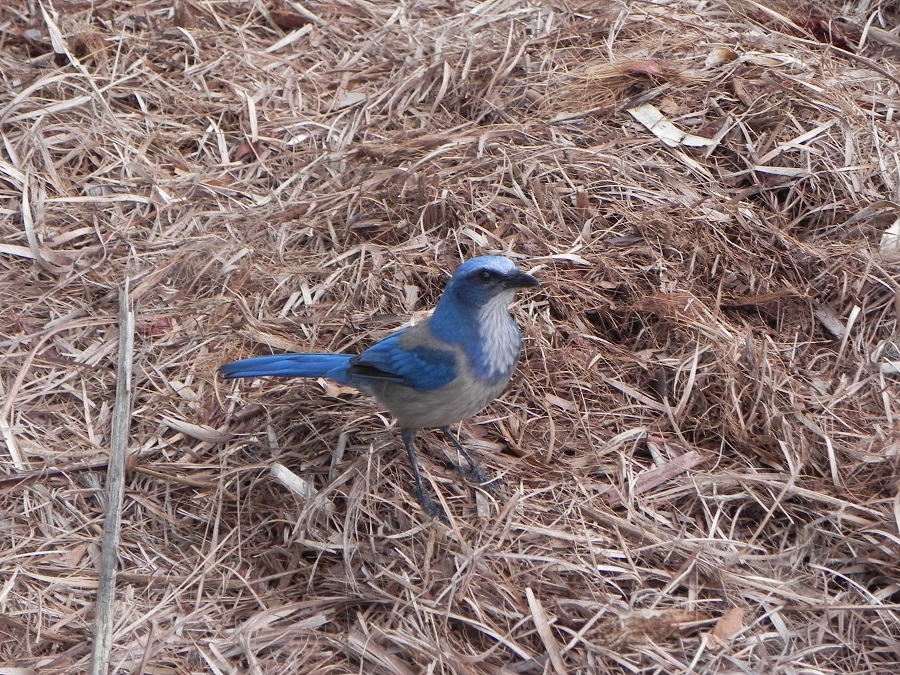There is typically a hierarchy which exists among animal species. For instance, the larger more aggressive breed of dog will typically end up ruling wild packs. I am no zoologist so I do not pretend to be an expert on this subject. But I can tell you what I have examined about the scrub-jay of Florida and how it relates to birds of other species.
The scrub-jay’s behavior towards other birds has mainly to do with two factors: (1)What kind of threat that bird is to the scrub-jay directly and (2) territory. If the scrub-jay is within the small area it considers it’s territory it is much more likely to be aggressive toward other birds. This is because it is competing for resources such as food and water. But also, birds of other species may be a threat to eggs and hatchlings. During breeding season you will see scrub-jays behave more aggressively within their territory.
Birds of special concern, besides the obvious larger hawks and other raptors, are blue-jays and “birds of opportunity” (vulchers). Birds which seem not to bother the Florida scrub-jay very much are grackles, pigeons, mocking-birds, sparrows, woodpeckers and chickadees. These birds will often be in the vicinity of scrub-jays and neither pays attention to the other.
Crows don’t seem to interact with the Florida scrub-jay very often either. Many times they will share the same branch and not interact at all. This is not to say that the occasional crow won’t get a little too close to a scrub-jay nest and need to be chased away.
I have seen scrub-jays chase blue jays and I have seen it the other way around too. For the most part scrub-jays control their area and blue jays will stay out of it. The scrub-jay has a very small area of controlled space so the blue jay can pretty much have any area outside of it. But they venture into one another’s space all the time.
At the start of winter, FL scrub-jays are always on a little bit more of an alert. This is mainly because of raptors that travel south for the winter. The merlin, for example, shows up in pretty large numbers and will often hover around looking for anything of food value. The scrub-jays will make warning calls when they spot the merlin. The more frequent and urgent the warning sounds are, the closer and more imminent the threat is. The jays will then dive for cover. They will stay there for hours waiting for the predator to move on.
Buzzards/vulchers are generally not a threat to Florida scrub-jays other than the possible raiding of a nest. But the large size of the buzzard in the distance may resemble a bird-of-prey and consequently cause a FSJ to make the alarm call and dive for cover. Once they discover that the overhead bird is a buzzard they typically reemerge.
I have seen very little interaction between FSJ’s and Cardinals. Its like they are operating on two different frequencies. They exist beside one another and hardly interact. Grackles will oftentimes study the FSJ when it is hiding a morsel of food then raid the stash when the FSJ flies away. This is behavior seen both inner-species and inter-species.
Other birds will react to the warning calls of the FSJ. I have seen these other species make themselves scarce at the simple audible alert emitted from the scrub-jay.
One thing I find very funny and entertaining is when a mockingbird decides to incorporate the warning call of a scrub-jay into its repertoire. The scrub-jay will instantly pay more attention and sometimes go for cover when the mockingbird emulates this call.
Like any bird, the FSJ will react to an audio recording of its own species’ calls. However, if you are looking for a friendly and trusting interaction with a scrub-jay I don’t suggest you try this.
